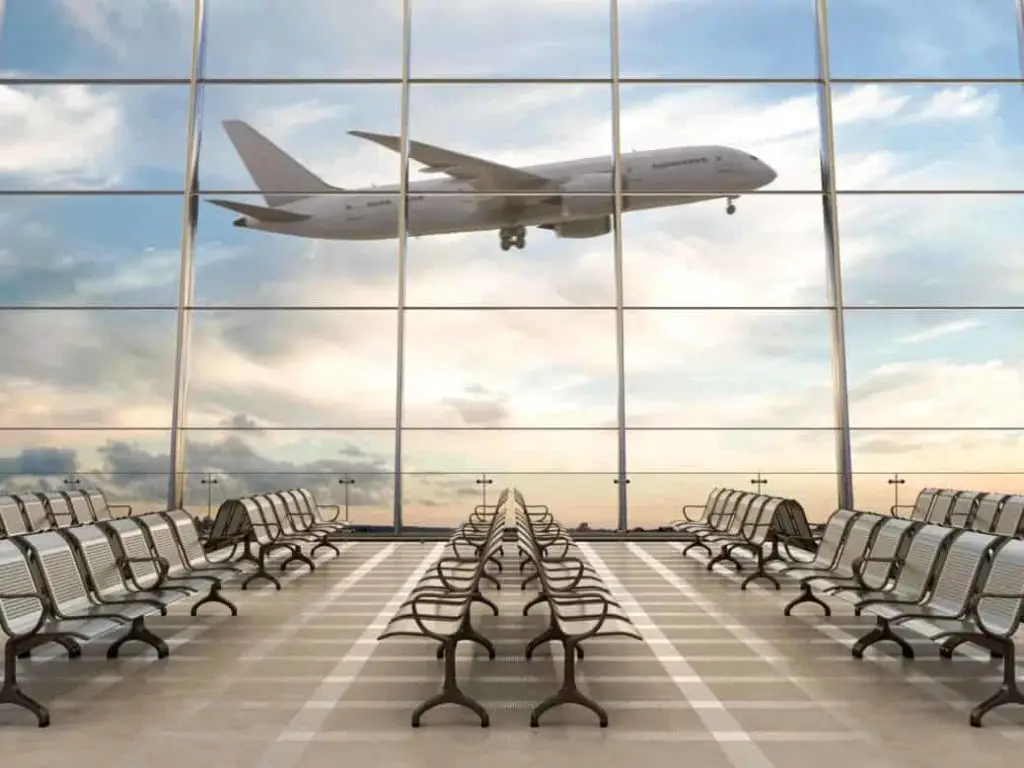An airport is commonly known as an airplane terminal, aerodrome, or airfield.
It is a place and facility for airplane take-off and landing.
An airport typically features paved runways and maintenance facilities, as well as passenger and cargo terminals.
In this article you’ll learn:
- Introduction of an airport.
- Types of airports.
- Components of an airport.
- Merits and Demerits of airport.
- Lots more.
So, if you’re ready to go to an airport, this article is for you.
Let’s dive right in.
Introduction to Airport:
The airport is the fastest and most efficient way to move products and people from one place to another, within the country and beyond.
An airport is simply an airfield that is designed for commercial usage.
Air transport helps increase exports and imports.
Therefore, an airport is essential for the economic development of any country.

Types of Airport:
The two main types of airports are “primary” and “nonprimary.”
1. Primary airports:
Primary airports are commercial service airports with more than 10,000 yearly passenger movements.
2. Non-primary airports:
Airports offer regular passenger service and between 2,500 and 10,000 enplanements every year.
Classification of the Airport:
Commercial service, principal, cargo service, reliever, and general aviation airports are all classified under the legislation.
- Commercial Service Airports
- Large Hub
- Medium Hub
- Small Hub
- Non-Hub
- General Aviation Airports
- National
- Regional
- Local
- Basic
- Unclassified
Components of an Airport:
Runway:
A runway is a paving land strip that is used for aircraft landing and tech off.
It is in a flat position with no obstacles in the way.
The number of airports at the airport is determined by the amount of traffic.
If the traffic rate exceeds 30 per hour, a second runway will be required.
There are different runway patterns are available and they are as follows:
Single runway:
It’s sufficient for low-traffic airports or occasional use.
This runway is aligned towards the direction of the wind in that area.
Two runways:
Two runways are divided into two main sections, each of which is planned out in a different direction to accommodate for crosswinds or other wind conditions in the area.
The runways might be built out in an L shape, T shape, or X shape.
Hexagonal runway:
A runway that is hexagonal in shape.
This is the most current runway laying system. In which airplane take-off and landing actions are permitted at any time and without disturbance.
This is best for airports with a lot of traffic or the busiest airports.
45-degree runway:
A 45-degree runway is used when the breeze coverage for the same airfield capacity is higher.
60-degree runway:
It’s tough to pick which direction to lay the runway when the wind is blowing from all directions in that area.
In this situation of airport, a 60-degree runway is chosen, which seems to be a triangular configuration of runways.
60-degree parallel runway:
It is a 60-degree runway extension that is used when the wind coverage in the other two directions is insufficient to justify the use of the third runway.
However, if there is a lot of air traffic, controlling operations becomes difficult.
As a result, a parallel runway to the one in use is necessary.
A 60-degree parallel runway is ideal for this purpose.
Taxiway:
The taxiway connects either the runway terminal area, apron, or Hanger with other things.
These are made of asphalt or concrete, just like the runway.
An apron is a runway that is used for aircraft parking.
It is also where the aircraft are loaded and loaded.
Aprons are usually in front of the main terminal or closer to the hangar.
Terminal Building:
The terminal is where administrative services for the airport are handled.
Travelers are inspected before and after traveling to this building.
Travelers can enter the plane directly from the terminal buildings through the Sky Pool, Walker, and other media.
Similarly, the passenger on the plane enters the terminal building directly.
Control tower:
A control tower is a place where the plane in a specific zone, whether it is land or air, is controlled.
The controller uses radar to monitor the situation and transmit information by radio.
As a result, the control tower functions as the airport terminal’s central nervous.
Hanger:
A hanger is a place where planes are maintained and repaired.
The taxiway attaches to the hanger to the runway, which can easily be moved to the hangar for aircraft repair.
Steel trusses and frames are used to create large shapes of the hanger.
A large area for a hangar should be placed aside to allow easy planes.
Parking:
Parking is the outside of the terminal building.
Sometimes below the terrain of the terminal building where airport employees or passengers store their vehicles.
Also read: Space Frame Structure
Advantages of an Airport:
- High Speed.
- Easy transport.
- Free from physical barriers.
- Comfortable and Quick Services.
Also read: Shell Structure
Disadvantages of an Airport:
- High Costs.
- Huge Investments.
- More Risks.
- Causes heavy pollution.
- Specialized Skilled workmanship required.
Also read: Prefabricated Structure
Conclusion:
The operation of the airport is extremely sophisticated, including a complex system of aeroplane support services, passenger services, and aeroplane services.
As a result, airports can be large employers as well as major tourism and transportation hubs.


Related Posts
Refresh Your Office: Simple Ideas to Boost Productivity and Motivation in Your Workplace:
Understanding the Nuances of Office Chair Vs Ergonomic Chair to Select Better!
Rock Quality Designation(RQD): Building Strong Foundations
Spread Footing
Masonry Cement
Plain Cement Concrete
Concrete Efflorescence
Concrete Pile
Stepped Footing